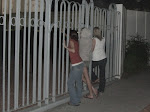According to the Center for Disease Control, in 2009 approximately 2.1 million women between the ages of 15 and 44 were infertile. “Baby Mama” is a film about a single woman, Kate Holbrook, who made several attempts to conceive, finally resorting to surrogacy after being informed she had a one-in-one million chance to get pregnant. Infertility is an increasing problem in the United States as more women are waiting until their thirties and forties to conceive their first child; “Baby Mama” addresses the issue of infertility fairly adequately; however, giving a false illusion of the process to diagnose.
Doctors consider infertility to be described as unsuccessfully conceiving after one full year of trying (primary) or having a first child followed by multiple miscarriages (secondary). Kate is told that she is infertile due to a T-shaped uterus after nine attempts to conceive, a timeline is not given. Physical abnormalities of the uterus, endometriosis, pelvic inflammatory disease, and most commonly problems with ovulation cause infertility in women. Many things such as smoking, toxin exposure, age, stress, obesity, and sexually transmitted infections increase the risk.
Kate is a 37 year old business woman, who set her career before having a family; as age increases, the fertility rate decreases due to various physiological changes. The National Women’s Health Information Center provides information about infertility in women of advanced maternal age stating, “about one third of couples in which the woman is over 35 have fertility problems,” due to ovarian and egg changes (Infertility, 2006). It is becoming increasingly more common for women to wait until their thirties or forties to have their first child, making conception more difficult and increasingly less likely.
“Baby Mama” creates a false illusion that doctors are quick to declare that a woman is infertile; Kate is only shown going to the fertility specialist once, at which point he tells her she has a one-in-one million chance of pregnancy…….

In the third paragraph at the end you use increasingly twice in the same sentence. Maybe change it or remove the second one. Also, some of your sentences seem long. Maybe split them up into different sentences.
ReplyDeleteI really liked your paper and it is very interesting to read. Good Work!
Great job! Just look at the long sentences, but thats all.
ReplyDeleteI love the use of statistics in this. You did a great job. Heidi and Mike said the rest.
ReplyDelete